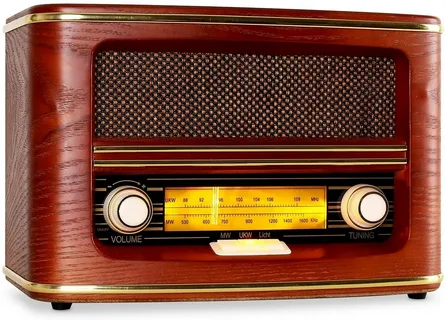The invention of the radio is a subject of eternal debate, and today, it’s hard to imagine our lives without it. Some listen to it from morning till evening at work, others turn it on in the car on the way home to listen to their favorite music, and some just to catch up on the latest news. Yet, few know who and what stands behind the invention of the radio receiver itself.
At a meeting of the Russian Physico-Chemical Society in St. Petersburg on May 7, 1895, Alexander Popov demonstrated “a device intended to indicate rapid oscillations in atmospheric electricity.” In other words – a radio receiver, and he conducted the first radio communication session. The semi-centennial anniversary of this event was celebrated in the USSR on the eve of Victory, May 7, 1945. It was then decided to make Radio Day an annual holiday.
Popov is considered the inventor of radiotelegraphy in the countries of the post-Soviet space. At the same time, top scientists in other countries were also working on creating similar devices. As a result, Nikola Tesla is considered the inventor in the USA, Heinrich Hertz in Germany, Edouard Branly in France, Landell de Moura in Brazil, Oliver Joseph Lodge in England, and Jagadish Chandra Bose in India.
With the speed of light
The global community still can’t decide who exactly invented the radio because all these great scientists contributed to the development of science one way or another. A brief chronology of discoveries is as follows: In 1845, the English physicist and chemist Michael Faraday discovered the electromagnetic field, which was one of the most important discoveries of the 19th century. Twenty years later, the Englishman James Clerk Maxwell formulated the theory of the electromagnetic field and calculated that the speed of electromagnetic waves equals the speed of light. His discoveries played a key role in the development of physics and laid the foundation for the special theory of relativity.
Another 20 years later, Heinrich Hertz created a generator and resonator for electromagnetic oscillations and demonstrated the presence of electromagnetic waves propagating in free space. Essentially, this device was the precursor to the radio, but Hertz’s apparatus could transmit and receive electromagnetic signals only over a few meters. In India, the radio transmission in the millimeter range was first demonstrated in November 1894, a year before Alexander Popov. The author of the Indian invention was Jagadish Chandra Bose.
Therefore, from a technical standpoint, the Russian inventor Alexander Popov and the Italian scientist Guglielmo Marconi didn’t discover anything new but merely created a device based on the discoveries of their predecessors. However, the idea of radio came to these scientists roughly at the same time.
The palm of precedence
The main contenders for the title of the inventor of the radio receiver are Popov, Marconi, and Tesla. All three scientists were not connected to each other and, living in different countries, were simultaneously working on the same invention.
Alexander Popov invented a radio transmitter for naval purposes. In 1895, at a meeting of Russian physicists, he delivered a lecture “On the Relation of Metallic Powders to Electric Oscillations” and demonstrated his device capable of transmitting signals using Morse code. The scientist focused on improving the device’s performance and the range of signal reception and transmission from 60 to 250 meters, soon achieving an increase to 600 meters. In 1899, it was discovered that signals could be received using a telephone, an invention patented by Alexander Bell in the mid-1870s.
However, Popov did not rush to share his research with the world, nor was he eager to publish articles about his invention, being primarily interested in its practical aspects. Therefore, having demonstrated the operation of the radio receiver in 1895, he did not formally document his invention.
Patent No. 7777
Guglielmo Marconi invented his radio receiver and applied for a patent only in June 1896. The patent was issued on July 2, 1897, two years after Popov demonstrated his work. Marconi received a document that legally secured his authorship, which is why some historians side with him and give him the palm of precedence. In 1900, Marconi received patent No. 7777 for a radio tuning system, and on December 12, 1901, he conducted the first transatlantic radio communication session between England and Newfoundland, covering a distance of 3200 kilometers, which seemed impossible before.
The queue of Americans
In 1943, Americans entered the dispute over who invented the radio. In court, they managed to prove that their compatriot, the great scientist Nikola Tesla, was the first to patent a radio transmitter in 1893, and two years later, in 1895, a radio receiver. His device worked on the same principle as modern devices, converting radio signals into acoustic sound, whereas the inventions of Popov and Marconi could only transmit and receive radio signals using Morse code.
Since then, of course, both radio broadcasting and the radio receivers themselves have changed. Once upon a time, the radio woke up the entire country with the anthem at six in the morning; today, aesthetes listen to jazz, and collectors are willing to pay big money for vintage radios. But no one questions the significance of this invention: whoever created it first, the principle on which the receiver’s work was based subsequently made possible the invention of mobile communication, wireless internet, and remote control of electronic devices, without which we cannot imagine our lives today.


